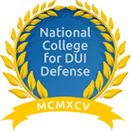68 N.J. 414, 346 A.2d 401
Supreme Court of New Jersey.
STATE of New Jersey, Plaintiff-Respondent,
v.
Russell J. TAMBURRO, Defendant-Appellant.
Argued Sept. 8, 1975.
Decided Oct. 21, 1975.
Defendant was convicted before the Clifton Municipal Court of operating a motor vehicle while under the influence of a narcotic and he appealed. On trial de novo, defendant was again found guilty before the county court, and he appealed. The Superior Court, Appellate Division affirmed, and the Supreme Court granted certification. The Supreme Court, Sullivan, J., held that where defendant, who admitted having taken daily dose of methadone, exhibited unmistakable symptoms of being under the influence of a narcotic to extent that it materially affected his physical and mental faculties and made it unsafe for him to operate a motor vehicle on highway, defendant was guilty of violating statute prohibiting operation of motor vehicle while under influence of intoxicating liquor, narcotic, hallucinogenic or habitproducing drugs.
Affirmed.
The opinion of the Court was delivered by
SULLIVAN, J.
Defendant Russell J. Tamburro was found guilty of operating a motor vehicle while under the influence of a narcotic, a violation of N.J.S.A. 39:4-50(a). He was enrolled in a methadone maintenance program at the time and admitted to having ingested a prescribed dose of *417 methadone the morning of his arrest. [FN1] The arrest took place on July 31, 1972 at approximately 10:00 p.m.
FN1. Defendant asserts that in May 1971, the Clifton Municipal Court had ordered him to enroll in a methadone maintenance program.
Defendant contends that the evidence was insufficient to support his conviction and, if valid, adversely affects all methadone programs by subjecting participants therein to charges of violating N.J.S.A. 39:4-50. We find no merit or validity in any of defendant’s contentions and affirm the judgment of the Appellate Division which upheld the finding of guilt.
On the evening in question a Clifton police officer in an unmarked patrol car observed **403 defendant who was operating a motor vehicle and was attempting to pull out onto Route 46, a four-lane highway. Despite wide gaps in traffic defendant did not readily avail himself of opportunities to enter upon the highway, and when he did so, made an extremely wide right-hand turn causing part of his car to cross over into the fast lane of eastbound traffic.
Defendant proceeded easterly along Route 46 and then made another extremely wide right-hand turn into a side street, coming ‘to the extreme left hand side of the street.’ At this point the officer overtook defendant’s vehicle and stopped it.
When defendant was asked for his license and registration he fumbled excessively with his wallet. Defendant was asked to get out of the car and, when he did so, the officer noticed that defendant’s eyes were bloodshot and glazed with pinpointed pupils. As defendant stood there, he swayed slightly, appeared uncoordinated and his speech periodically became slurred. He appeared tired, sluggish and drowsy. He denied that he had been drinking. There was no odor of an alcoholic beverage on his breath, nor any indication of physical injury.
The officer, who had undergone special training and education in the drug detection and drug abuse field and who *418 was then assigned to the Clifton Drug and Abuse Squad, said to defendant that he appeared to be under the influence of drugs, whereupon defendant stated that he had taken 120 milligrams of methadone in a methadone maintenance program earlier that day.
The officer was of the opinion that defendant could not operate a motor vehicle competently and had not been operating one competently. He placed defendant under arrest and charged him with a violation of N.J.S.A. 39:4-50.
Defendant was taken to police headquarters in Clifton where an eye test and walking test were administered. The arrest report noted defendant’s pale face, bloodshot eyes with pinpointed pupils, changing moods from hostility to passiveness, drowsiness and a scabbed needle mark on his right arm not of recent origin. No blood or urine tests were given.
Defendant was tried in the Clifton Municipal Court on a charge of operating a motor vehicle while under the influence of a narcotic. At the trial, the arresting officer testified to the foregoing matters and expressed an opinion based on his expertise in the drug field that at the time he arrested defendant, defendant’s faculties were impaired, that defendant could not operate a motor vehicle properly and that he was under the influence of narcotics.
The State also presented testimony from Dr. Robert W. Baird, a medical doctor, who had an extensive background in narcotics and drug control. The trial court found him to be eminently qualified in this field.
Dr. Baird, in answer to a hypothetical question which described defendant’s physical condition at the time of his arrest, including all of the symptoms testified to by the officer and the absence of any oror of alcohol or indicia of any physical injury, expressed the opinion that such person had recently, within several hours, ingested an opiate or a narcotic which had opiate-like qualities. He said that these symptoms could not have been produced by anything other than the ingestion of a narcotic drug and that a person *419 with such symptoms would be under the influence of a narcotic drug.
He described methadone as a synthetic narcotic having addictive properties and opiate-like qualities. It is widely used in methadone maintenance programs, the object of which is to block off the desire for heroin. In the beginning a person is given small doses of methadone which are gradually increased in amount as the system builds up a tolerance. The dosage is levelled off at a plateau determined by the physician and thereafter the person is maintained on a regular daily dosage. In the early stage of the program the individual is rather sleepy and unresponsive because **404 of the tranquilizing effect. [FN2] However, as a tolerance is built up, the effects on the person are diminished but would still remain to some degree and, depending on the individual could affect driving ability.
FN2. Because of this, participants in methadone maintenance programs are required to surrender their drivers’ licenses to the program during the first few weeks of treatment.
Defendant testified as a witness and denied that his operation of the motor vehicle, his appearance and symptoms were as described by the officer. He acknowledged that he had been on a methadone maintenance program for 13 months and that he regularly took his prescribed dosage of methadone between 7:00 and 7:30 every morning. He also produced Dr. Hans W. Freymuth, a medical expert in the field of narcotics, who testified that it was highly unlikely that defendant would exhibit the symptoms observed by the officer from a regular dosage of methadone taken some 14 hours earlier as part of a maintenance program.
It was his opinion that ‘something else’ was responsible for defendant’s condition and while he thought that an additional dose of methadone would not be the cause, there was a strange mixture of symptomatology which made it difficult to determine what kind of toxic substance defendant might *420 have taken. Dr. Freymuth would at least ‘suspect’ that defendant had taken additional methadone or another opiate.
The trial judge found the arresting officer’s testimony as to defendant’s erratic operation of his car, his behavior and physical characteristics to be credible. He also accepted the testimony of Dr. Baird and found that defendant had, within several hours of his arrest, ingested an opiate or a narcotic drug with opiate-like qualities, so that at the time of his arrest defendant was under the influence of a narcotic to the extent that his physical coordination and mental faculties were deleteriously affected. As heretofore noted, he found defendant guilty. A fine of $200 and costs was imposed and defendant’s driver’s license was suspended for a period of two years.
Defendant appealed to the County Court where, on a trial Do novo on the record, he was again found guilty and the same sentence was imposed. On appeal to the Appellate Division, the judgment was affirmed on the ground that there was sufficient credible evidence to support the conviction of defendant for operating his motor vehicle while under the influence of methadone which the Appellate Division noted ‘clearly’ was a narcotic drug.
We granted certification principally to consider the impact, if any, of defendant’s conviction on methadone maintenance programs. 66 N.J. 333, 331 A.2d 33 (1974).
The principal contention of defendant and the Amicus Patrick House Legal Clinic is that defendant was convicted because of his admitted participation in a maintenance program and that the Appellate Division equated defendant’s legal use of methadone with being under the influence of methadone. It is argued that this broad application of the statute effectively bars participants in methadone maintenance programs from operating a motor vehicle-almost a necessity in today’s society-thus destroying the viability and attractiveness of these maintenance programs.
[1] We do not agree that the Appellate Division gave the statute the meaning attributed to it. The language ‘under *421 the influence’ used in the statute has been interpreted many times. Generally speaking, it means a substantial deterioration or diminution of the mental faculties or physical capabilities of a person whether it be due to intoxicating liquor, narcotic, hallucinogenic or habit-producing drugs. In State v. Johnson, 42 N.J. 146, 165, 199 A.2d 809 (1964), an intoxicating liquor case, we stated that ‘under the influence’ meant a condition which so affects the judgment or control of a motor vehicle operator as to make it improper for him to drive on the highway. More recently, in State v. DiCarlo, 67 N.J. 321, 338 A.2d 809 (1975), we held that an operator of a motor vehicle **405 was under the influence of a narcotic drug within the meaning of N.J.S.A. 39:4-50(a) if the drug produced a narcotic effect ‘so altering his or her normal physical coordination and mental faculties as to render such person a danger to himself as well as to other persons on the highway.’ Id. at 328, 338 A.2d at 813.
Essentially this was the standard applied by the Appellate Division. Defendant was found guilty because the evidence showed he was under the influence of a narcotic to an extent that it materially affected his physical and mental faculties and made it unsafe for him to operate a motor vehicle on the highway.
[2] The Appellate Division stated that the drug in question was methadone. However, this was unnecessary to the court’s decision. The statute does not require that the particular narcotic be identified. It is enough if, from the subject’s conduct, physical and mental condition and the symptoms displayed, a qualified expert can determine that he or she is ‘under the influence’ of a narcotic. This, of course, would include a drug which produces a narcotic effect. DiCarlo, supra. To the extent that State v. Siegmeister, 106 N.J.Super. 577, 256 A.2d 319 (Cty.Ct.1969) and State v. Tiernan, 123 N.J.Super. 322, 302 A.2d 561 (Cty.Ct.1973) hold to the contrary, they are disapproved.
*422 The thrust of the Motor Vehicle Act is safety on the highway. The particular section is addressed to the evil of operating a motor vehicle while one’s physical coordination or mental faculties are substantially diminished by ‘intoxicating liquor, narcotic, hallucinogenic or habit-producing drug.’ Competency to operate a motor vehicle safely is the critical question.
[3] It should be made perfectly clear that mere participation in a methadone maintenance program does not subject a motor vehicle operator participant to a charge of violating this statute. There were proofs that once a participant becomes stabilized on a regular dosage of methadone, ability to operate a motor vehicle with safety is not impaired. However, participation in such a program does not immunize a person from application of the statute.
[4] We do not know whether defendant’s condition was the result of his having taken his prescribed dosage of methadone that morning. His medical expert opined that ‘something else’ had caused defendant’s symptoms. What is clear, though, is that defendant exhibited unmistakable symptoms of being under the influence of a narcotic within the meaning of the statute, and was unfit to operate a motor vehicle.
Affirmed.
For affirmance: Chief Justice HUGHES, Justices MOUNTAIN, SULLIVAN, PASHMAN, CLIFFORD and SCHREIBER and Judge CONFORD-7.
For reversal: None.











